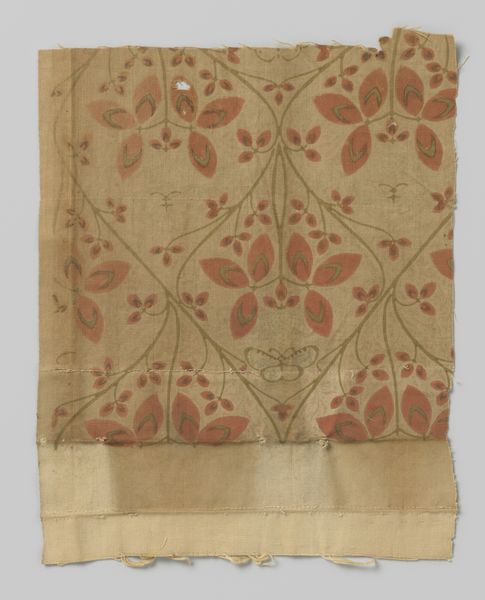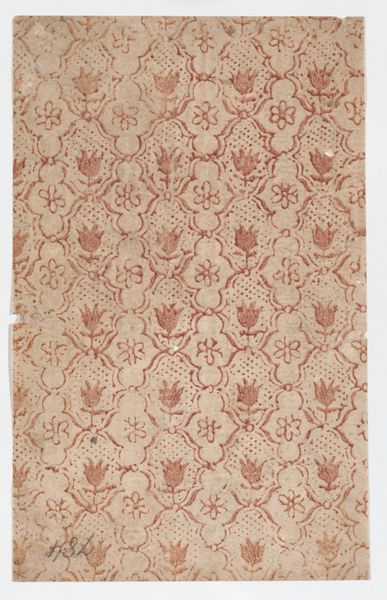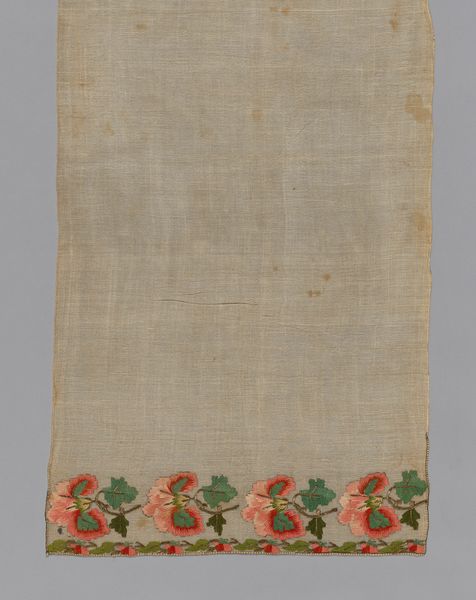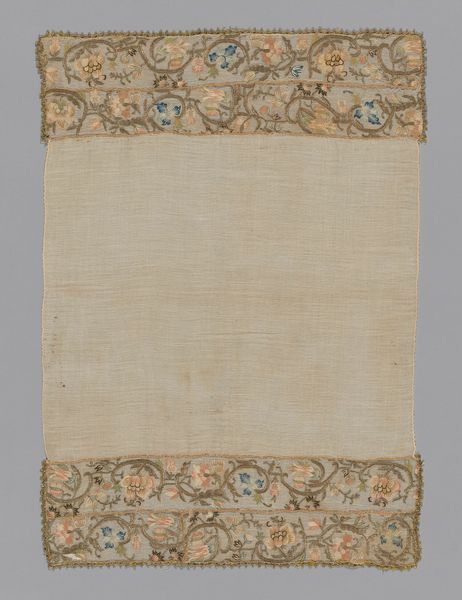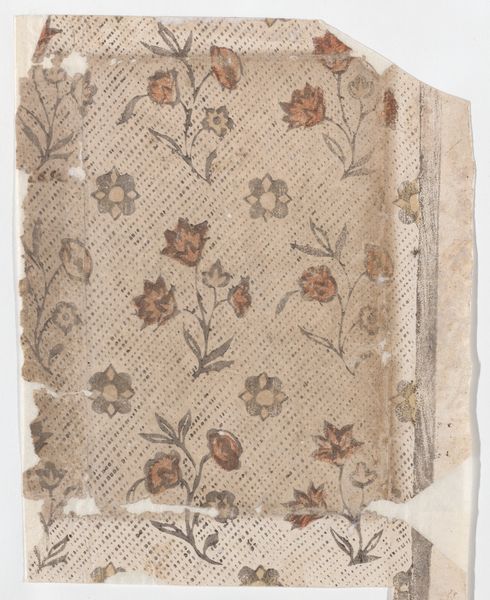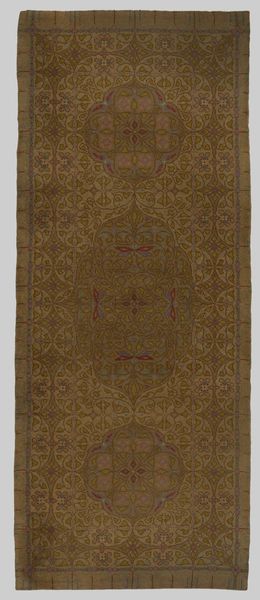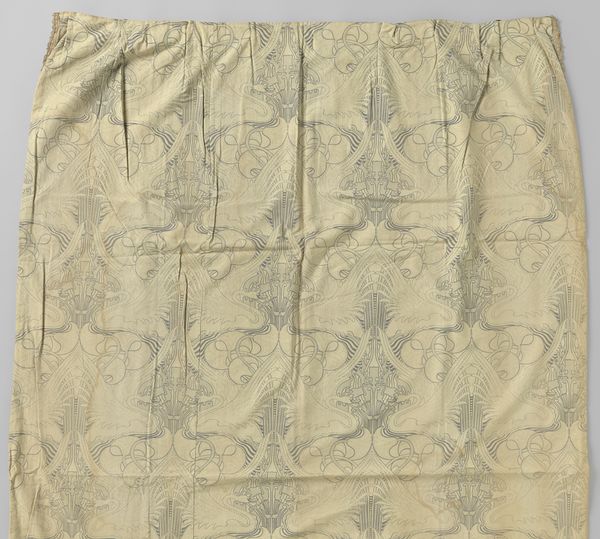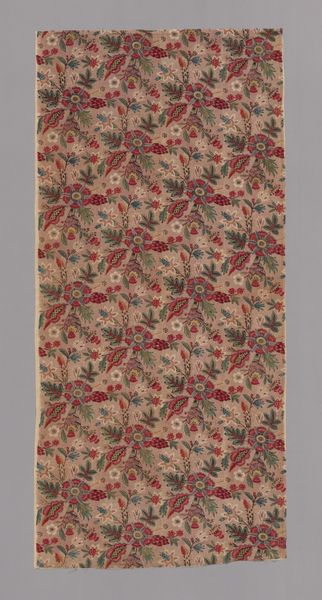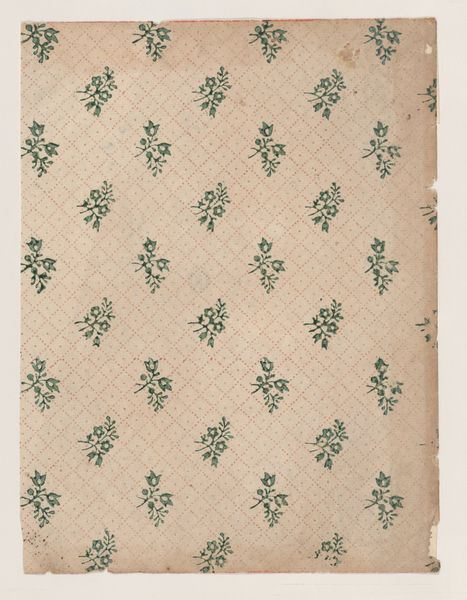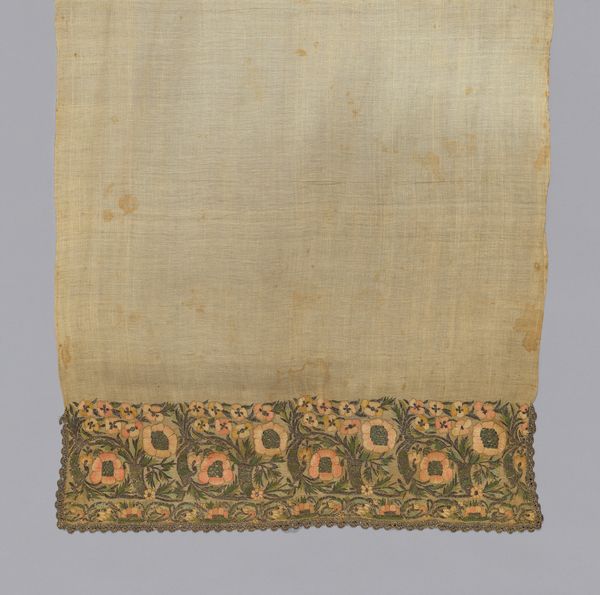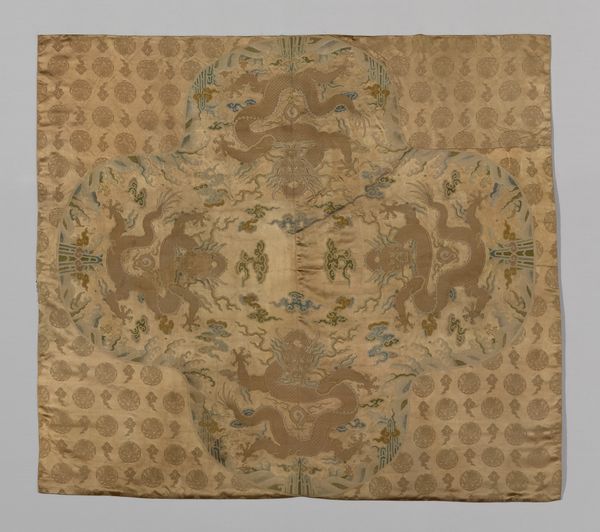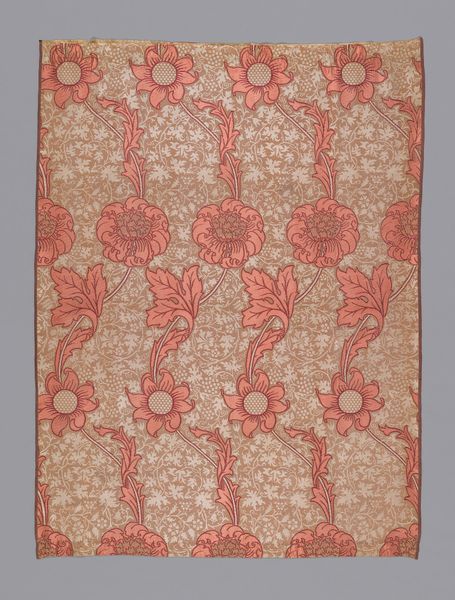
Fragment bedrukte cretonne met patroon van klaver met vlinder binnen spitsovalen 1900 - 1925
0:00
0:00
theonieuwenhuis
Rijksmuseum
mixed-media, print, textile
#
mixed-media
#
art-nouveau
# print
#
textile
#
fashion and textile design
#
pattern design
#
fabric design
#
repetition of pattern
#
pattern repetition
#
textile design
#
decorative-art
#
imprinted textile
Dimensions: height 55.0 cm, width 31.5 cm
Copyright: Rijks Museum: Open Domain
Curator: Oh, look at this delightful piece. It’s a fragment of printed cretonne designed by Theo Nieuwenhuis between 1900 and 1925. It's at the Rijksmuseum and showcases a clover and butterfly pattern inside pointed ovals. Editor: It's gentle, like a whisper of a forgotten summer dress. I see a faded elegance. It gives the feeling that this fabric holds a history— a past life as curtains in a sun-drenched room, perhaps? Curator: Yes, precisely! The use of cretonne is interesting. It’s a strong, unglazed cotton fabric that gained popularity for its durability. It would've been an accessible choice for many homes seeking affordable beauty. And Theo Nieuwenhuis—I feel him in the decorative repetition, making even mundane objects enchanting. Editor: Definitely seeing a dance between nature and geometry, then! The butterflies feel almost secondary; ghost-like impressions inside these pointed ovals like pinned specimens. What inks would they have been using at the time, I wonder, to get such subdued shades of earthy green and that sort of antique-rose tint? Curator: Earth pigments would be the likely base, offering subtle color. The printing itself might have been done using wood blocks, lending itself to those crisp yet soft edges we see here. This reflects an art nouveau desire to elevate everyday objects, which, thinking about it, does carry some irony! A high-art vision expressed through a more accessible medium. Editor: That's the contradiction of the movement, isn’t it? Accessible beauty concealing complex labor. We're left appreciating a moment of stillness on cotton while being conscious of the complex production behind textile design during the turn of the century. Curator: I love the imperfections, the tiny marks from what I assume would be its daily life, and all the stories these fabrics would tell if they could speak. These pieces invite a contemplation that goes far beyond surface appreciation. Editor: Absolutely, its fragmentariness invites us to question the bigger picture! Its texture speaks about what kind of treatment and resources went into making such designs so we're aware of the complex history behind what we consider as “just” printed textile. Curator: Thank you, for shining a different light, making the narrative even richer, from private musing to tangible experience. Editor: Thank you as well. The convergence of material conditions, high aesthetic aspiration, and traces of the artist’s vision offers us some much needed and reflective pause.
Comments
No comments
Be the first to comment and join the conversation on the ultimate creative platform.
